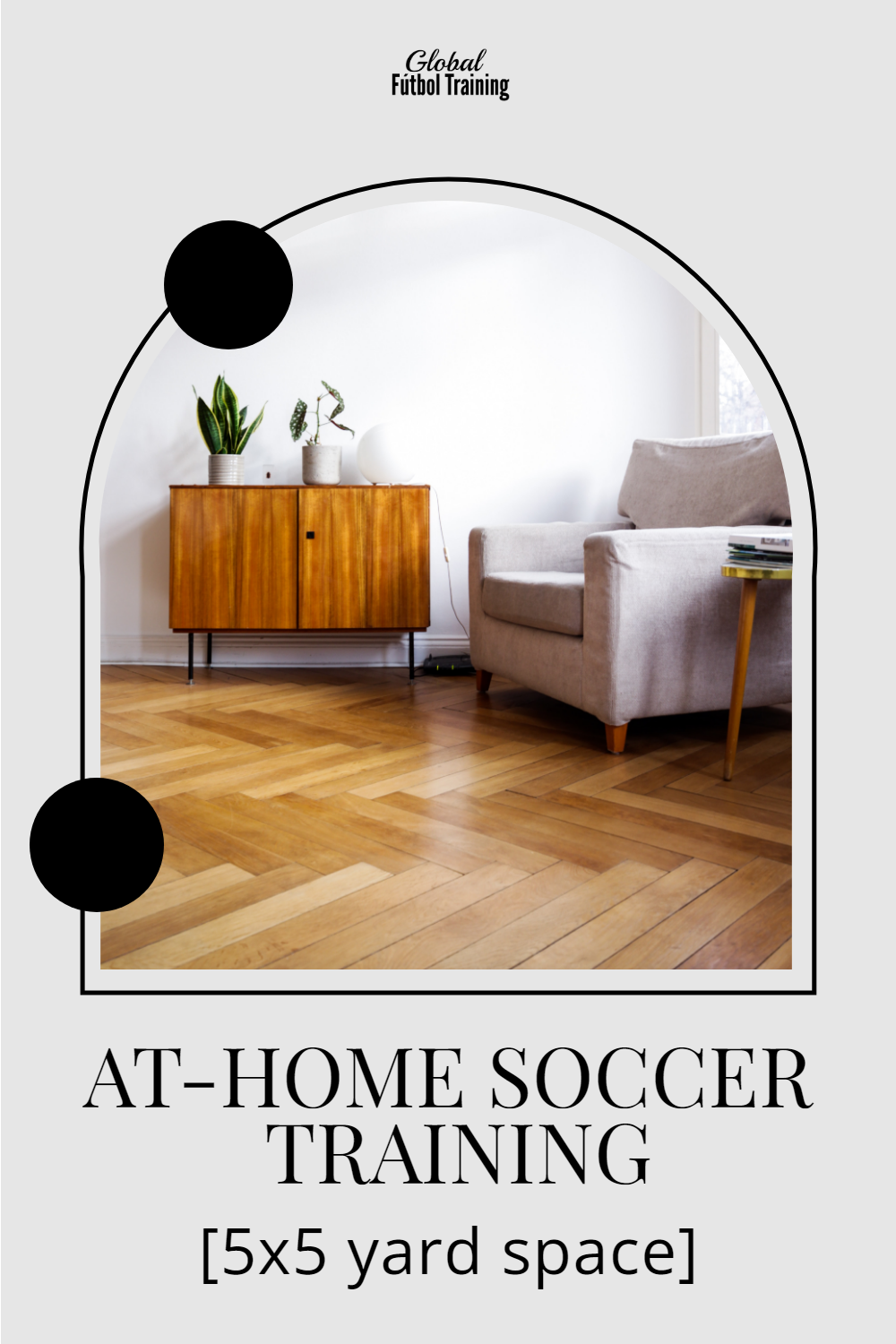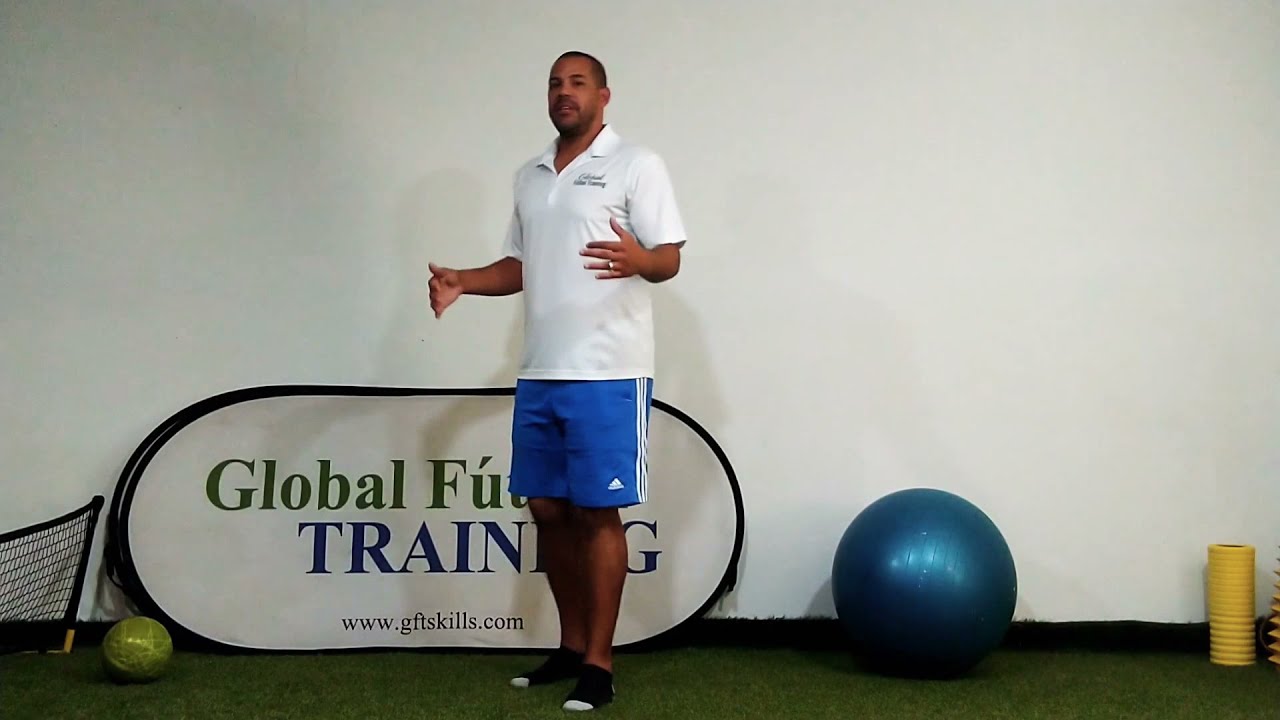Your at home soccer training guide to help players improve faster starts with your mindset. Once you have the right mentality it comes down to working on the best skill methods. Don’t waste too much time on silly tricks – instead focus on the key fundamentals. Note: This post contains some affiliate links for your convenience. Click here to read my full disclosure policy.
Where to train at home
The cool part is it doesn’t matter where you train…
Every home is different in terms of where to play and what to use.
Whether the living room, driveway, garage, yard or the hallway… Find what’s best for you.
You don’t need much space!
Below you’ll find videos of me or my trainees working in a space no bigger than 5×5 yards.
“Kids who practice at home give themselves a huge advantage!”
1st touch and passing skills [all levels]
Wall passes are one of the best things to do!
Find a wall or get a rebounder like this and work 3 yards – 4 yards away from it.
This larger rebound net gives you the option to work on volleys and passing on the ground.
Practicing in a small space gives you more reps which means you’ll improve faster.
PART 1 ↓
“Repetition builds smoother skill.”
King Pele would play soccer for 7 hours per day, but most of it was spending time alone with the ball…
PART 2 ↓
500 touches in 3 minutes
Even if you’ve played your whole life, sometimes it’s hard to remember what to work on when training alone:)
There are things you should do continually throughout the year… Then other skills that are good to learn just to keep things fresh.
If you are short on time, but want to get in some work try this 3 minute homework session. ⇓ These aren’t things we work on a lot, but worth doing a few times per year.
Aerial drills [high level]
High level drills don’t mean a younger U9 player can’t practice them.
It’s good to introduce advanced drills to young players…
Introducing is different than spending lots of time with. Again, some things we need to practice daily/weekly, while other skills are just to be introduced to.
Let us become really good at the most important skills, but also be able to do things that you might only do a few times per year.
If you have a partner (parent or friend) to toss balls do this advanced overhead drill – video.
For the older or more advanced player, this should be something you should try and master. Meaning getting it 90% clean or better.
If you can control the ball 90-100% of the time, it doesn’t mean you are too good for it.
Great players [HS – college – pro] should still work on this to stay sharp.
Receiving the ball on the ground and out of the air are elements that are for sure going to happen on game day… Therefore, practice on the regular.
Using 2 rebounder walls
By far one of my favorite ways for players to train at home is using 2 walls in 1 drill.
Okay yes, the video below shows me working in a space a bit larger than 5×5 yards… If you have the extra few yards it helps with this type of drill. On the contrary, if you don’t have the extra space it might be better to work on your 1 touch passing and flicks.
Not only does this ↑ help with trapping and passing, but also turning while receiving.
In addition to the actual ball skills, you also become comfortable, smooth and calm at changing directions.
Dribbling at home soccer training
Work on a mix of dribbling methods.
- Stationary
- Turning sharp 180°
- Change of direction
In small spaces of 5-10 yards [hallway, living room, driveway or yard] take 1-2 touches, keeping the ball close.
The ability to “run with the ball” keeping it close, but not touching it is helpful.
example ↓ U9
*When you have *more space [20+ yards]…
Practice *running with the ball – example ↓ U16
Running with the ball is taking bigger and less touches – allowing you to take more steps between touches and run faster.
It’s important to be familiar with not touching the ball while it’s at your feet…
Too many club players only know how to do tight space dribbling drills and therefore, can’t adjust on game day when needing the bigger touches.
2 different methods for home soccer training
When it comes to training solo at the house, find what’s best for you.
Some people like a schedule and choose a certain day to train. Arguably the best way is spending a few minutes with the ball morning, noon and night… Time adds up!
- Pick 1 day and spend 20-30+ minutes training on your own.
- Work with the ball 3 minutes several times throughout each day [morning – evening]. 3 minutes x 3 times per day x 7 days per week = 63 minutes per week. That’s a free private lesson!
Small progress is still progress
Agility, skills and strength
With your home soccer training you can add in agility and strength exercises.
- All you need is a 5 yard area.
- Do these agility ladder drills with and without the ball.
- Ball control – basic foundations and advanced skills
- Strength training with limited equipment.
Our Most Popular Posts:
- 3 ways to strike the ball with power
- How to play aggressive
- 8 best 1st- touch drills
- Expert dribbling tips
- Goal side defending
Follow @GFTskills on Social Media







